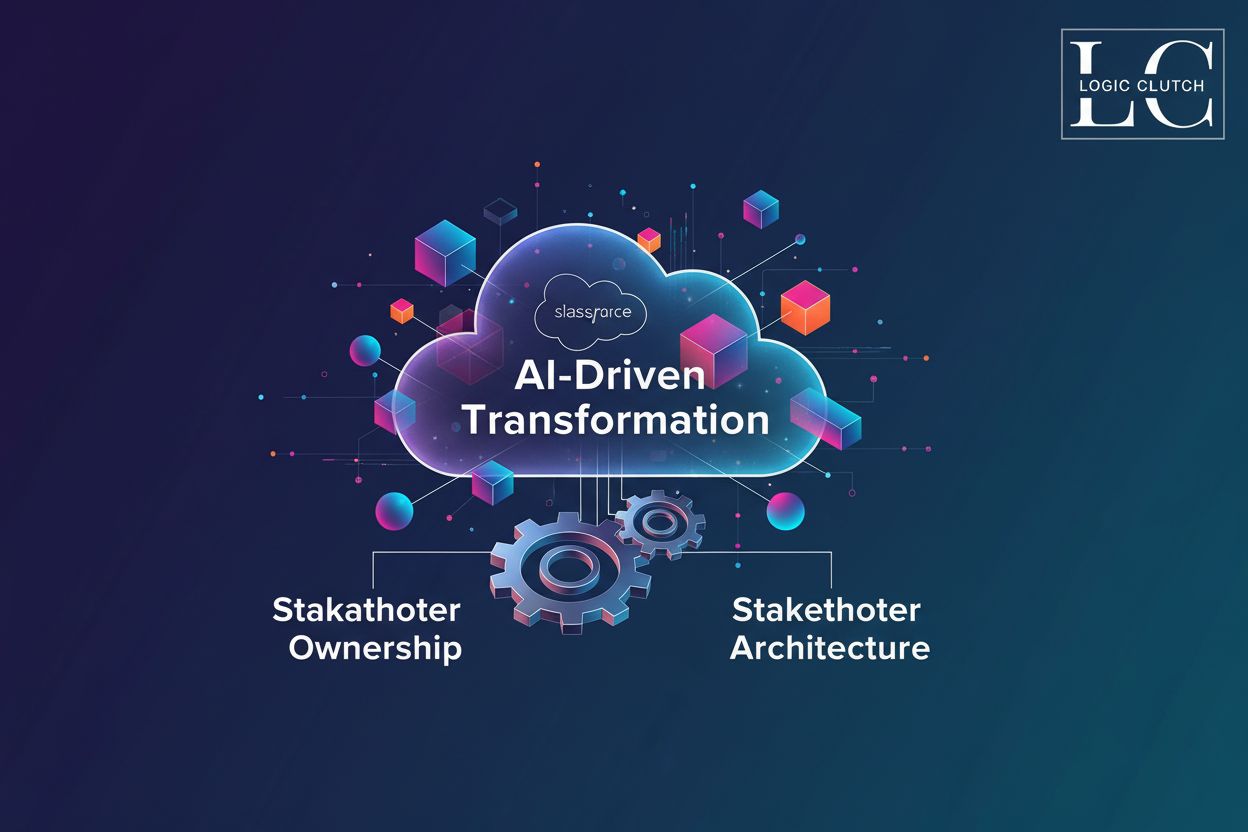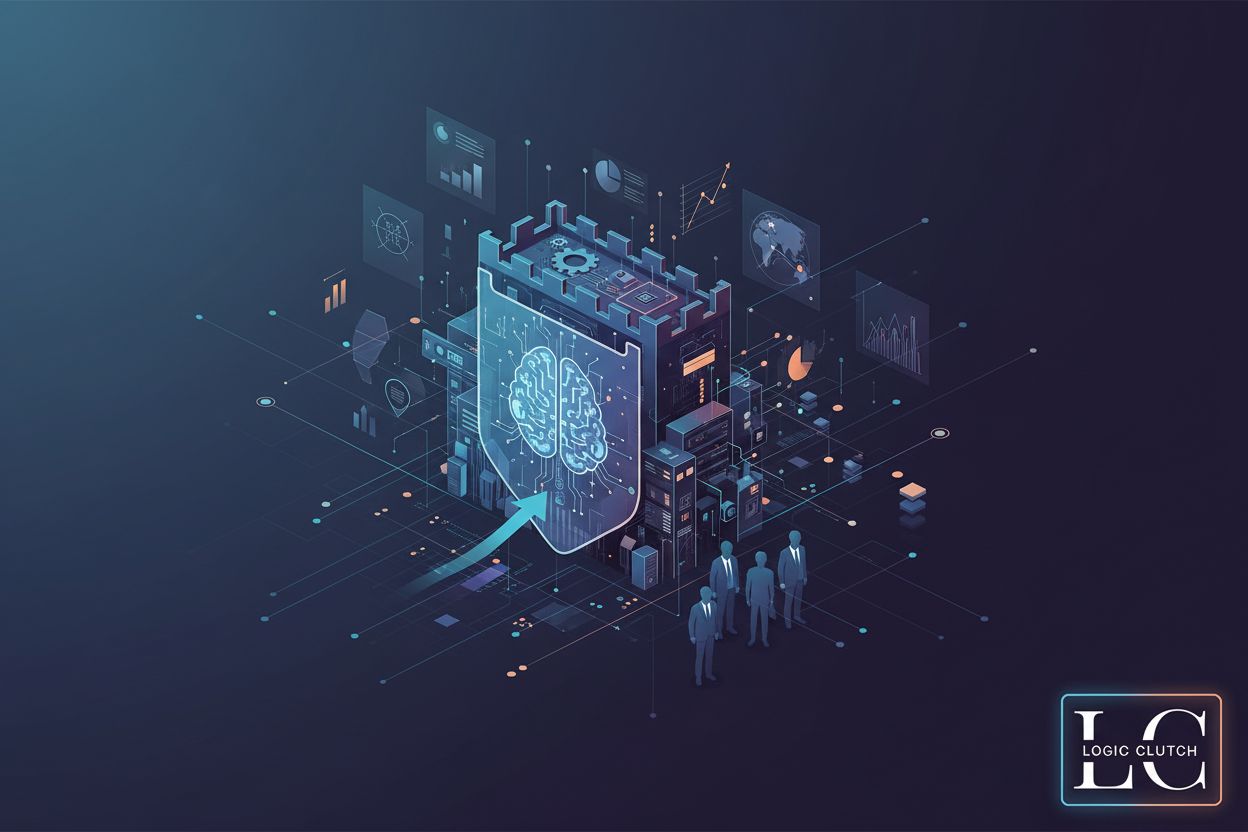Leading Advances in AI for Culture and Taste Intelligence
TL;DR
Introduction: The Rise of Culture and Taste Intelligence
Okay, so, ever notice how some ads just get you and others are totally off base? That's kinda what we're diving into here – the rise of culture and taste intelligence. It's a big deal, and it's changing how businesses connect with people.
Basically, it boils down to this:
Culture Intelligence (CQ): It's not just about knowing different languages or customs. It's about understanding why people from different backgrounds think and act the way they do. Like, what motivates them, what are their values? It's the ability to navigate and adapt effectively to diverse cultural contexts.
Taste Intelligence: This goes even deeper. It's about figuring out individual preferences – what someone likes, what they don't like, and why. Think of it as personalized recommendations on steroids! It’s about understanding the nuances of individual aesthetic and experiential preferences.
Why it matters: 'Cause people are tired of generic experiences. They want stuff tailored to them. Traditional market segmentation just isn't cutting it anymore, you know? It's like, assuming everyone who lives in a certain zip code wants the same thing - that's obviously not true.
Customers now, they expect more. They want experiences that feel like they were made just for them. Hyper-personalization is the key. It's about using data and ai to create experiences that resonate with each individual on a deeper level.
And look, it's not just about selling more stuff. It's about building real relationships with customers. That's where the future is headed, and culture and taste intelligence are how we get there.
AI Techniques Driving Culture and Taste Understanding
Ever wonder how ai seems to "get" some people but completely misses the mark with others? That's where these ai techniques come in, trying to bridge that gap. It's about making ai smarter, more culturally aware, and better at understanding what we really want.
So, let's break down some of the main ways ai is trying to understand culture and taste:
Natural Language Processing (NLP) and Sentiment Analysis:
- nlp isn't just about translating words; it's about understanding the context behind them. Think of slang, idioms, or even sarcasm – things that can completely change the meaning of a sentence depending on where you're from.
- Sentiment analysis takes it a step further, trying to gauge the emotional tone behind the words. But emotions are expressed differently across cultures, you know? What's considered polite in one culture could be seen as rude in another, so ai needs to get that. To achieve this cultural nuance, AI employs methods like:
- Cross-cultural sentiment lexicons: These are dictionaries of words and phrases with associated sentiment scores that are adapted for different cultural contexts.
- Culturally-aware embedding models: These models are trained on diverse datasets to capture the subtle ways language use varies across cultures, allowing them to better interpret sentiment in context.
- Specific training data strategies: Using datasets that are representative of various cultural groups helps the AI learn to distinguish between culturally-specific expressions of emotion.
- For example, in customer service, nlp can help chatbots understand if a customer is frustrated, even if they aren't explicitly saying "I'm angry!". Or, in marketing, it can analyze social media posts to see how people from different cultural backgrounds are reacting to a campaign.
Machine Learning for Preference Prediction:
- This is where ai tries to figure out what you like before you even know it yourself. Machine learning algorithms analyze your past behavior – what you've bought, what you've clicked on, what you've watched – to predict your future tastes.
- Two common techniques are collaborative filtering (recommending things that people with similar tastes liked) and content-based filtering (recommending things that are similar to what you've liked in the past).
- Crucially, for culture and taste, collaborative filtering can be enhanced by considering cultural similarities. If users from a particular cultural group often share preferences for certain types of media or products, this information can be factored into recommendations, making them more culturally relevant.
- Think of Netflix suggesting shows based on what you've already binged, or Amazon recommending products based on your purchase history. The trick is not getting stuck in a filter bubble, where you only see things that confirm your existing biases.
Computer Vision and Visual Preference Analysis:
- It's not just about words – ai can also analyze images and videos to understand what you find visually appealing. This is huge in industries like fashion, design, and advertising.
- ai-powered visual search lets you upload a picture of something you like and find similar items online. And ai can analyze the visual elements of ads – colors, composition, imagery – to see what resonates with different audiences.
- For instance, an ai could analyze the design elements in home decor photos to identify styles that are trending within specific demographics. Or, in healthcare, computer vision could be used to analyze patient feedback on the design of hospital rooms, ensuring they are perceived as calming and therapeutic across different cultural backgrounds.
To illustrate how machine learning predicts preferences, check out this diagram:
It's wild how much data ai can process to figure out our tastes. As ai gets better at understanding these nuances, it will be able to create experiences that are more relevant, more engaging, and, honestly, just plain better.
Integrating AI Culture and Taste Intelligence with Salesforce CRM
Integrating ai culture and taste intelligence with Salesforce crm? Sounds complex, right? But honestly, it's about making your crm smarter so you can connect with customers on a whole new level.
It starts with beefing up those customer profiles in Salesforce. I mean, name, address, and purchase history are cool and all, but they don't tell you the whole story. We need to enrich those profiles with cultural data.
- Enriching Salesforce contact records with cultural data: Think about adding fields for preferred communication styles, cultural background, or even preferred holidays. This isn't about stereotyping; it's about understanding.
- Using ai to infer cultural background from behavior: ai can analyze things like language used in emails, websites visited, and even social media activity to infer someone's cultural background. Creepy? Maybe a little. Effective? Definitely. This inference is made by analyzing patterns in language (e.g., specific idioms, formality levels), online browsing habits (e.g., websites frequented, content consumed), and social media interactions (e.g., topics discussed, networks engaged with). AI models, often employing NLP and machine learning, identify correlations between these behaviors and known cultural markers. Ethical safeguards, such as anonymization, consent, and clear data usage policies, are crucial to mitigate the "creepy" factor and ensure responsible application.
- Improving customer segmentation and targeting: Armed with this info, you can create way more targeted segments. Instead of just "millennials," you can target "millennial Hispanic women interested in sustainable fashion." See the difference?
Imagine a bank using this to offer culturally relevant financial products. Or a healthcare provider tailoring communications to different cultural beliefs about medicine. It's pretty powerful stuff.
Okay, so you've got these souped-up customer profiles. Now what? Time to personalize your marketing campaigns and content. This is where the rubber meets the road, people!
- Creating culturally relevant email campaigns: Ditch the generic "Happy Holidays" email and send personalized greetings based on the customer's cultural background. It shows you care, you know?
- Tailoring website content to individual tastes: Use ai to dynamically change the content on your website based on what you know about the visitor. Show different products, use different images, even use different language.
- Using ai to optimize ad targeting and messaging: Stop wasting money on ads that don't resonate. ai can help you target the right people with the right message, increasing click-through rates and conversions.
Let's not forget about customer service! ai can make a HUGE difference here. And it's not just about chatbots; it's about empowering your human agents with better information.
- Providing culturally sensitive customer support: Train your agents to be aware of cultural differences in communication styles. What's considered assertive in one culture might be seen as rude in another.
- Using ai to translate languages and understand dialects: ai-powered translation tools can help agents communicate with customers who speak different languages. And they can even understand different dialects and accents.
- Personalizing customer service responses based on individual preferences: Give agents access to the customer's cultural profile and taste preferences so they can tailor their responses accordingly.
Imagine a financial institution using ai to provide investment advice that aligns with a customer's cultural values. Or a retailer offering personalized product recommendations based on the customer's past purchases and stated preferences.
Logic Clutch specializes in integrating ai-powered solutions with Salesforce crm to enhance customer engagement and personalization. Our expertise ensures data accuracy and consistency, which is crucial for effective ai applications. We offer custom development and ai-powered saas solutions tailored to your specific business needs, helping you leverage culture and taste intelligence for competitive advantage.
Sounds pretty cool, huh? Next up, we'll dive into the ethical considerations – because with great power comes great responsibility, and all that jazz.
Use Cases and Examples
Okay, so you're probably thinking, "How does all this ai culture and taste stuff actually work in the real world?" Good question! It's not just theory; companies are using it to boost sales and make customers happier.
Imagine walking into a store where everything seems like it was picked just for you. That's the goal with ai-powered product recommendations. It's about going beyond basic demographics and tapping into individual preferences.
- Cultural background plays a big role. For instance, a retailer might suggest different clothing styles based on cultural norms or preferred colors. It's about understanding what resonates with specific communities.
- Individual tastes are key, too. ai algorithms analyze your past purchases, browsing history, and even social media activity to predict what you'll love next. Think of it as a super-smart personal shopper.
- The impact? Increased sales and customer loyalty. A happy customer is more likely to come back and recommend your brand to others. It's a win-win.
Hotels are getting in on the action, too. Forget generic welcome baskets – it's all about personalized experiences now.
- Room amenities and services can be tailored to individual tastes. Prefer a certain type of coffee? Want a specific newspaper delivered to your door? ai can make it happen.
- Culturally relevant menus and entertainment options are also becoming more common. Think halal options for Muslim guests or traditional music for visitors from specific regions.
- The result? Higher guest satisfaction and loyalty. People are more likely to return to a hotel that makes them feel understood and valued.
But it's not just about selling stuff – ai is also being used to improve healthcare. Culturally sensitive patient care is becoming increasingly important.
- ai can help understand cultural beliefs and practices related to health. This can include everything from dietary restrictions to preferred communication styles. It's about respecting diverse perspectives.
- Treatment plans and communication strategies can be personalized accordingly. For example, a doctor might explain a medical procedure differently to a patient from a culture that values directness versus one that prefers a more gentle approach.
- Ultimately, this leads to better patient outcomes and satisfaction. When patients feel understood and respected, they're more likely to follow treatment plans and have positive experiences.
To visualize these use cases, imagine these scenarios:
- Product Recommendations: A diagram showing a customer's profile (demographics, past purchases, cultural tags) feeding into an AI engine that outputs personalized product suggestions.
- Personalized Hotel Experiences: A visual of a hotel app interface where a guest can select preferences (e.g., dietary needs, preferred language for in-room information, desired ambiance) which then influences room setup and service offerings.
- Culturally Sensitive Patient Care: A flowchart illustrating how patient intake data (including cultural background and beliefs) informs AI-driven communication strategies and treatment plan adjustments, leading to improved patient engagement.
So, yeah, ai culture and taste intelligence is already making a big impact across various industries. It's not just about making things more convenient; it's about creating more meaningful and personal experiences.
Ethical Considerations and Challenges
Okay, so, ai's getting all this data about us, right? But, like, how do we make sure it's not used for evil? It's a real concern, and it's not always a simple fix.
- Avoiding bias in ai algorithms is crucial. If the data used to train the ai reflects existing societal biases, the ai will perpetuate them. For example, if an ai is trained on data that predominantly features one demographic, it might not accurately understand or cater to others. This can lead to unfair or discriminatory outcomes, especially in areas like hiring or loan applications. It's like, garbage in, garbage out, but with potentially harmful consequences.
- Data privacy and security are paramount. We're handing over a lot of personal info. If that data's not protected, it could be exposed in a breach, leading to identity theft or other nasty outcomes. Companies need to be transparent about how they collect, store, and use data, and they need to comply with data privacy regulations, like gdpr.
- Transparency and explainability are key to building trust. If an ai makes a decision that affects someone's life, that person has a right to know why. Black box ai systems – where the decision-making process is opaque – are a major problem. We need ai that is explainable.
To ensure ethical AI development, a typical pipeline looks like this:
This diagram shows how we check for bias throughout the AI lifecycle, from data collection to ongoing monitoring, ensuring that culture and taste intelligence are applied responsibly and fairly.
It's all about responsible ai development and deployment. What's next? Let's wrap things up with a look at the future of culture and taste intelligence.
Future Trends in AI for Culture and Taste Intelligence
Okay, so where's all this ai culture and taste stuff headed? It's kinda wild to think about, honestly.
- ai algorithms are gonna get way better. I mean, we're already seeing advancements in deep learning, but imagine ai that can truly understand, not just mimic, human culture and taste. Think ai that can pick up on sarcasm without even trying.
- data is going to play an even bigger role, which is probably obvious. But it's not just about more data, it's about better data. Diverse, representative datasets are key to avoiding bias, as we've already discussed.
- Generative ai could explode. Imagine ai creating hyper-personalized content on the fly, adapting to individual preferences in real-time. It's like having a personal ai assistant who knows exactly what you want before you do.
For example, imagine an AI generating a personalized travel itinerary. It wouldn't just suggest popular tourist spots; it would consider your cultural background, your expressed interests (e.g., "I love street art," "I'm interested in ancient history"), and your taste in food. It might suggest a guided tour of local artisan workshops in a specific neighborhood known for its crafts, recommend a restaurant serving authentic regional cuisine based on your dietary preferences and cultural background, and even curate a playlist of local music that aligns with your musical tastes. This is hyper-personalization in action, adapting content dynamically to resonate deeply with the individual.
It's not just about ads that "get" you; it's about experiences that truly resonate.





